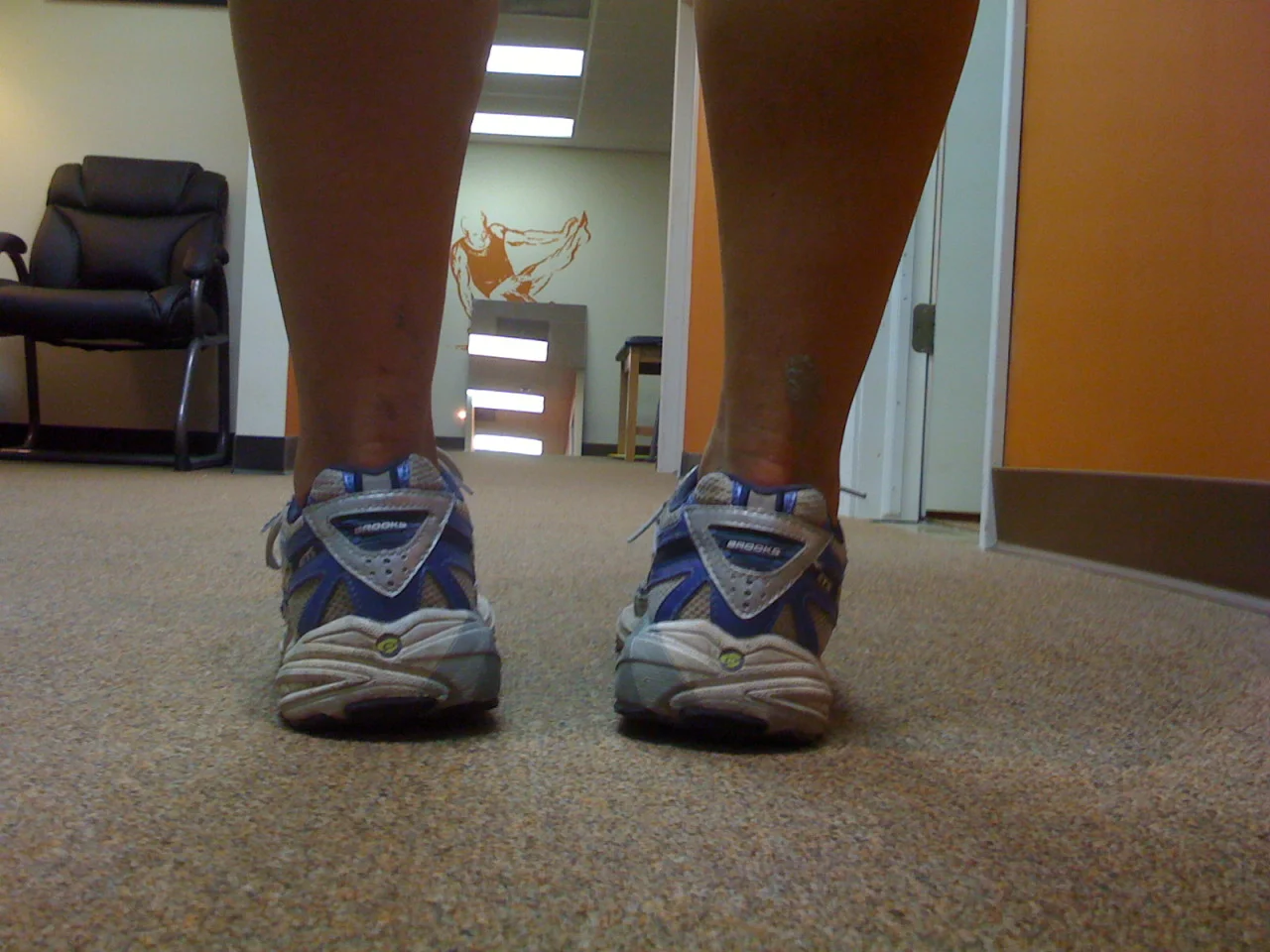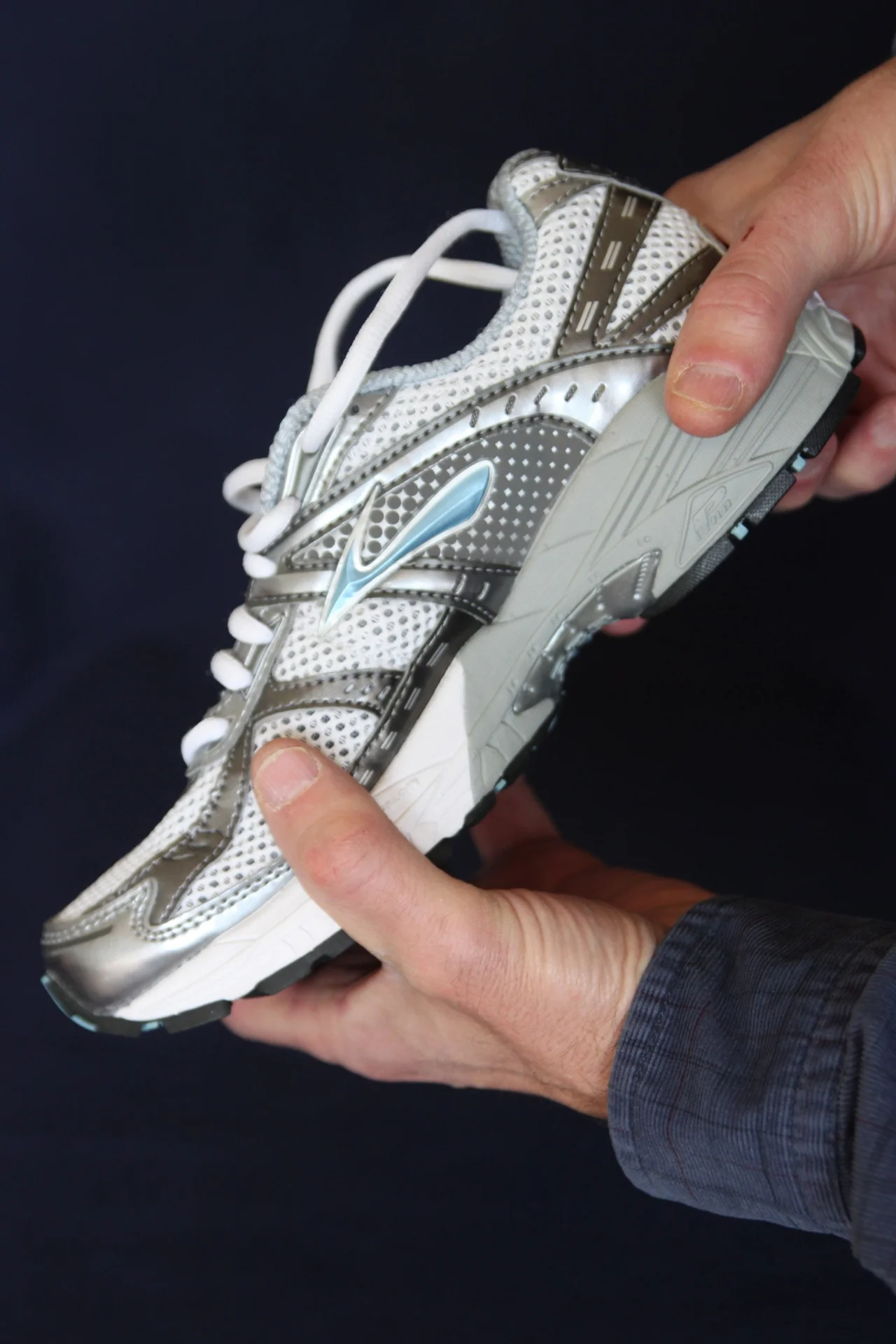The Dual Density Foam Running Shoe.
This goes along nicely with yesterdays post. Note the photo attached. This is a great example of something we all see everyday. A laterally tipped foot in a stability shoe. Clearly a shoe that has been mis-prescribed for the wrong reason. Or has it ?
This client is clearly tipped laterally in the shoe, forcing supination. Did this client self fit the shoe themselves in a discount store ? Were they fitted in a retail running store ? Where did things go wrong ? Or did they ? The initial knee jerk reaction is to say this is the wrong shoe for this client. Lets go a little deeper and ask some harder questions and see if you are considering some alternatives.
The assumption is frequently one of, “you are a hyperpronator so you need a stability shoe”. In this case is this person a hyperpronator ? There is no way to know, not in the shoe. On initial knee jerk observation this looks like a supinator in a stability shoe, a poor match. But read on …
1. What if this person has significant flat feet, pes planus with severe pronation problems, but they find the stability they need by standing on the outer edge of the foot in the mechanically locked out position (supination). Perhaps this is a less fatiguing posture, perhaps a less painful posture. This is often a comfort thing for hyperpronators to display. What you see is not always what you get because there are two types of feet, those that drop or collapse into the weakness and those that fight the collapse and weakness the whole way via an alternative compensation. You cannot tell by looking, certainly not from this picture of someone in a shoe. There must be a functional assessment and some gait evaluation.
2. There exists the high arched flexible foot that pronates excessively, quickly and for a long time (this is the flexible cavus foot) and then there is the high arched rigid foot (the equinovarus foot). The first described foot may need support from a stability shoe even though they have a high arch on presentation/examination and the later described foot can often go right into a neutral non-supportive shoe. Can you tell either of these from this picture ? No you cannot.
3. Maybe the person in the photo has tibial varum (bowed lower leg) combined with a rearfoot varus and forefoot varus. This could mean they pronate heavily through the midfoot-forefoot and less so through the rearfoot-midfoot. In this case they are still a heavy pronator but not through what is typically noted or detected by significant medial arch collapse. In this case the dual density shoe is not going to help all that much because the pronation is occurring mostly after the bulk of the shoe’s dual density stability foam has been passed through by the foot. Can this be detected by this photo ? Again the answer is no. The shoe fitter needs to be clinically aware that this type of client needs a forefoot varus posted shoe to help post up that medial tripod (1st metatarsal head).
4. Maybe, just maybe this is a typical rearfoot-midfoot pronating client, excessive mind you, and all they need is some foot and gait retraining to break their old compensation pattern of lateral weight bearing (standing or walking) and with this correct shoe they can then engage a healthier motor pattern.
Which is it ?
Do you know how to navigate your way through these issues to make the right decision ? There is no way to know here without seeing the foot naked and moving across the floor, and with a clinical examination to boot.
You can get all these things through our National Shoe Fit Certification program found here.
LINK: http://store.payloadz.com/results/results.aspx?advsearch=1&m=80204
Email us and we will share the necessary info to get you started. thegaitguys@gmail.com
Shawn and Ivo, The Gait Guys



















